Key Takeaways
- Minimalism isn’t about deprivation—it’s about optimization.
- Clutter—physical, digital, emotional—creates friction and drains energy.
- Strategic minimalism helps you reclaim control over your time and attention.
- Decluttering isn’t just physical—it’s psychological and emotional.
- Owning your pace starts with needing less and living more.
From Aesthetic to Strategic Minimalism
Minimalism is often misunderstood. It’s seen as a visual style, white walls, empty shelves, and sparse living. But true minimalism isn’t aesthetic. It’s strategic.
It’s a way of designing your life around clarity, energy, and intention. When applied deliberately, minimalism becomes a system for reducing friction and amplifying focus.
A World That Sells You More
Modern life is noisy. Every day, we’re flooded with messages urging us to consume more, buy more, eat more, download more, own more. The result? Clutter. Not just physical clutter, but digital, emotional, and mental clutter.
This constant accumulation creates friction. It drains energy. It clouds decision-making. And it disconnects us from what truly matters.
The world sells you more to distract you from what you already have.
The Philosophy Behind Lean Living
Minimalism isn’t about having less, it’s about needing less. It’s a mindset shift from accumulation to alignment.
Strategic minimalism asks: What adds value? What creates clarity? What supports your energy?
When you simplify intentionally, whether it’s your digital life, finances, calendar, or physical space, you begin to reclaim control. You stop reacting and start designing.
This philosophy is echoed in timeless teachings, from Stoicism to Buddhism, from James Allen to Musashi. The core idea is simple: freedom comes from detachment, not possession.
Minimalism isn’t about restriction. It’s about reclaiming your life from distraction.
Strategic Minimalism in Action
Here’s how strategic minimalism can show up in everyday life:
- Digital: Limit apps to essentials. Turn off notifications. Use cloud storage to centralize important files. Set screentime boundaries.
- Financial: Operate on a monthly budget. Track your net worth. Reconcile weekly. Spend based on need, not impulse.
- Physical: Declutter monthly or quarterly. Remove items that haven’t moved in weeks. Keep your wardrobe functional and uniform-like.
- Mental: Reduce decision fatigue. Let go of possessions that carry emotional weight. Create space to think clearly.
Letting go may trigger guilt, but clarity always follows. The less you carry, the more you can move.
Take the First Step
Start with your immediate environment. Identify one item that no longer serves you, something you’ve outgrown, something that represents an outdated version of yourself. Let it go.
Then subscribe to Own Your Pace and download the 7-Day Declutter Challenge to begin simplifying your life with intention.
If you’d like to explore minimalism further, The Minimalists offer a wealth of essays, tools, and real-life stories that go deeper into the philosophy and practice of living with less
👉 Next in the series: Digital Declutter: How to Simplify Your Online Life (coming soon)

